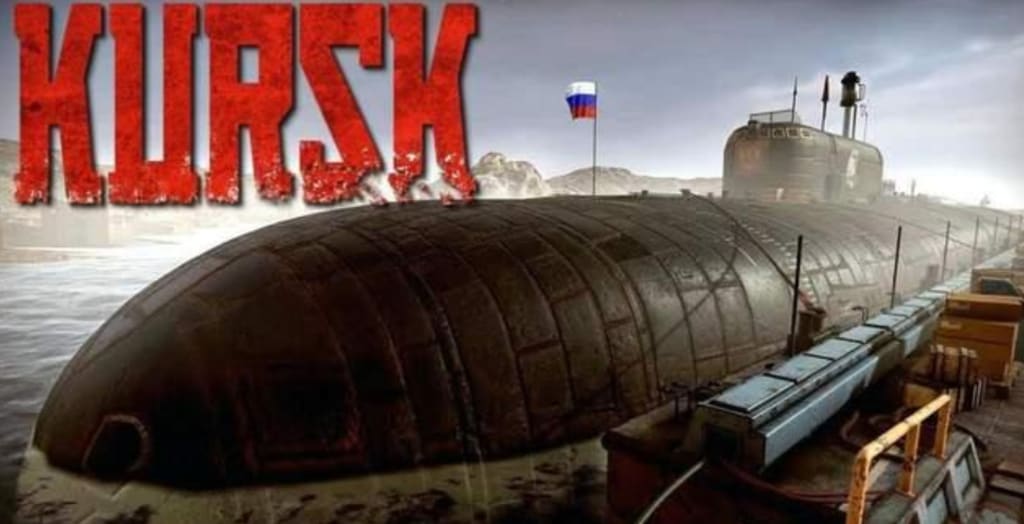The unsolved mystery of the Russian nuclear submarine explosion in 2000
So what is the truth?

In the summer of 2000, in the deep waters of the Arctic Ocean, a nuclear submarine known as the "aircraft carrier's nemesis" exploded twice in 135 seconds, killing 118 submarine personnel. The tragedy of the Kurtis became a microcosm of the general situation of the military at that time, ten years after the great changes in the Soviet Union. Not only did Russia refuse a multi-national rescue during the golden hour, but no official report has been made, so we can only make reasonable guesses about the causes and consequences.
Nuclear submarine - aircraft carrier nemesis
During the Cold War, the U.S. and the Soviet Union were very aggressive in their military competition, and the escalation of U.S. aircraft carrier battle group continued to escalate, especially with the commissioning of the Nimitz-class aircraft carriers, the pressure was put on the Soviet side, so at the height of the Soviet navy, they found an effective way to crack the U.S. carrier battle group, and that was the 949 Cruise Missile Nuclear Submarine, built by the Ruby Design Bureau, Russia's leading authority on nuclear submarine development, had a displacement of over 16,000 tons, a tonnage comparable to that of a small aircraft carrier at the time, with a 500-meter dive limit, and was equipped with 24 "Granite" anti-ship missiles. "This is a medium- and long-range supersonic missile that can be launched from underwater, carrying a nuclear warhead of 750 kilograms and flying over 500 kilometers.
The Granite, with its terminal guidance capability, can be launched at intervals with several missiles on multiple trajectories to hit the target, and even if one missile is intercepted, the others can follow up to become the lead bomb. Although the 949 nuclear submarines have not sunk an aircraft carrier, and the Kurtis has only been in service once in five years, the submarine is capable of destroying a carrier formation with a single ship. It was a true "carrier nemesis".
However, to pursue the submarine's cruising speed, the submarine was designed to be "slim", with a high density of equipment configuration, which led to high maintenance costs later on. It was not until 1999, when the last of the 949 nuclear submarines, the Kurtis, was recommissioned, that the rusty hull was fully painted.
The Kurtis, the world's quietest nuclear submarine at the time, capable of continuously tracking an aircraft carrier underwater at 30 knots, accidentally exploded twice during a military exercise.
Nuclear submarine accidents happen
In August 2000, Russia's strongest Northern Fleet, a ten-day military demonstration in the Barents Sea, almost all of the Soviet Union's legacy, the military exercise attracted the attention of many countries, the United States and the United Kingdom also sent submarines to "watch the war", as the most important Kurtis nuclear submarine, naturally shoulders Before the explosion of the Kurtis, it was tasked with launching multiple torpedoes against the non-nuclear aircraft carrier Peter the Great.

In "Peter the Great" waiting for the arrival of the second torpedo, but the electronic signal was delayed in displaying data, a minute later, instead, the equivalent of 200 kilograms of TNT was detected at the bottom of the explosion point, not waiting for everyone to react, just 2 minutes later, the second outbreak of incredible power burst from the bottom of the sea, even the warships on the surface can feel, soon, Norway's seismograph also detected about 3.5 magnitude earthquake power, however, the Northern Fleet in the explosion occurred 12 hours later, the Northern Fleet before the public, announced that the Kurtis had a major accident, despite the fleet, which was staying on the surface of the sea, opened the anti-submarine equipment all-around search, but the Kurtis did not release a distress buoy, in the vast Arctic Ocean to search for an It was not easy to search for a nuclear submarine that had sunk to the bottom of the sea and was completely lost.
It took 16 hours for Russia to find the site where the Kurtis sank. At that time, the sonar operator seemed to hear the sound of knocking in the cabin, but Russia refused to apply for rescue from any country, after all, the Kurtis as an advanced nuclear submarine has too many military secrets, and so, Russia with its ability several attempts to dock the stern compartment have failed, which then invited the Norwegian rescue team to rescue, the rescuers saw a huge hole in the front compartment of the Kurtis, knocking the cabin when there was no When the rescuers opened the stern compartment with professional tools, they saw a large number of corpses and were sure that no one had survived.
To figure out the cause of the accident, it was necessary to salvage this huge thing in the deep sea.
The Russian Federation allocated $140 million for the recovery of the Kurtis nuclear submarine, an expenditure that exceeds the annual military expenditure of the Northern Fleet. The investigation of this accident, but there are two kinds of sayings in the open and in the dark.
Analysis of the nuclear submarine explosion accident
The salvage work has been prepared for a year, and the Dutch salvage company even specializes in designing salvage equipment, striving to preserve the submarine's integrity to the maximum extent.
Although Russia did not issue an official accident report, from the situation of the salvaged hull, and various safety hazards before, the plain analysis of the whole process is this: the torpedoes loaded by the Kurtis, because of improper maintenance, seven out of ten are substandard when the torpedo was inserted into the No. 4 torpedo tube, the welding seam broke, resulting in the leakage of hydrogen peroxide fuel, hydrogen peroxide itself is not flammable, but After contact with catalytic impurities, rapid decomposition explosion, however, this leakage of torpedoes without a live warhead, will only cause a low-intensity explosion, 5 cm thick torpedoes are completely tolerable.
Bias Kurtis connected to the torpedo line plug, long corroded by seawater and did not get replaced in time, triggering a torpedo fire, from the bulkhead burn marks, showing that the local temperature reached 2000 degrees Celsius, so the torpedo cabin staff is estimated to have died on the spot, 135 seconds later, there was a second explosion, this time with incredible power, presumably this time at least seven live torpedoes were 400 degrees Celsius The fire directly spontaneously exploded, producing a considerable 5 tons of equivalent explosives, directly lifting the first area of the nuclear submarine's "sky.
After the surface, what is the covert investigation? The French filmed a documentary about two American submarines "watching the war", a careful too close to the Kurtis, the Kurtis thought it was under attack, before firing torpedoes, and then the United States saw the big deal also use torpedoes to counterattack, the disaster happened ------ In fact, this kind of gunfire collision happens from time to time, there are no less than 20 recorded accidents in Russia, and seven days after the sinking of the Kurtis, the USS Memphis was in a Norwegian military port for repairs. Anyway, not long after the accident, the United States forgave Russia a 10 billion dollar debt.
The cause of the accident may always be a mystery, but the dozen or so staff members who entered the aft compartment and closed the reactor shield in the nick of time made this serious incident not cause more harm, but it also meant that the nuclear submarine completely lost power and cut off the possibility of escape, in the last hours of life, they must also be full of fear.
About the Creator
Nao Fetter
Good psychological quality is beneficial to enhance physical fitness and improve resistance to disease






Comments
There are no comments for this story
Be the first to respond and start the conversation.